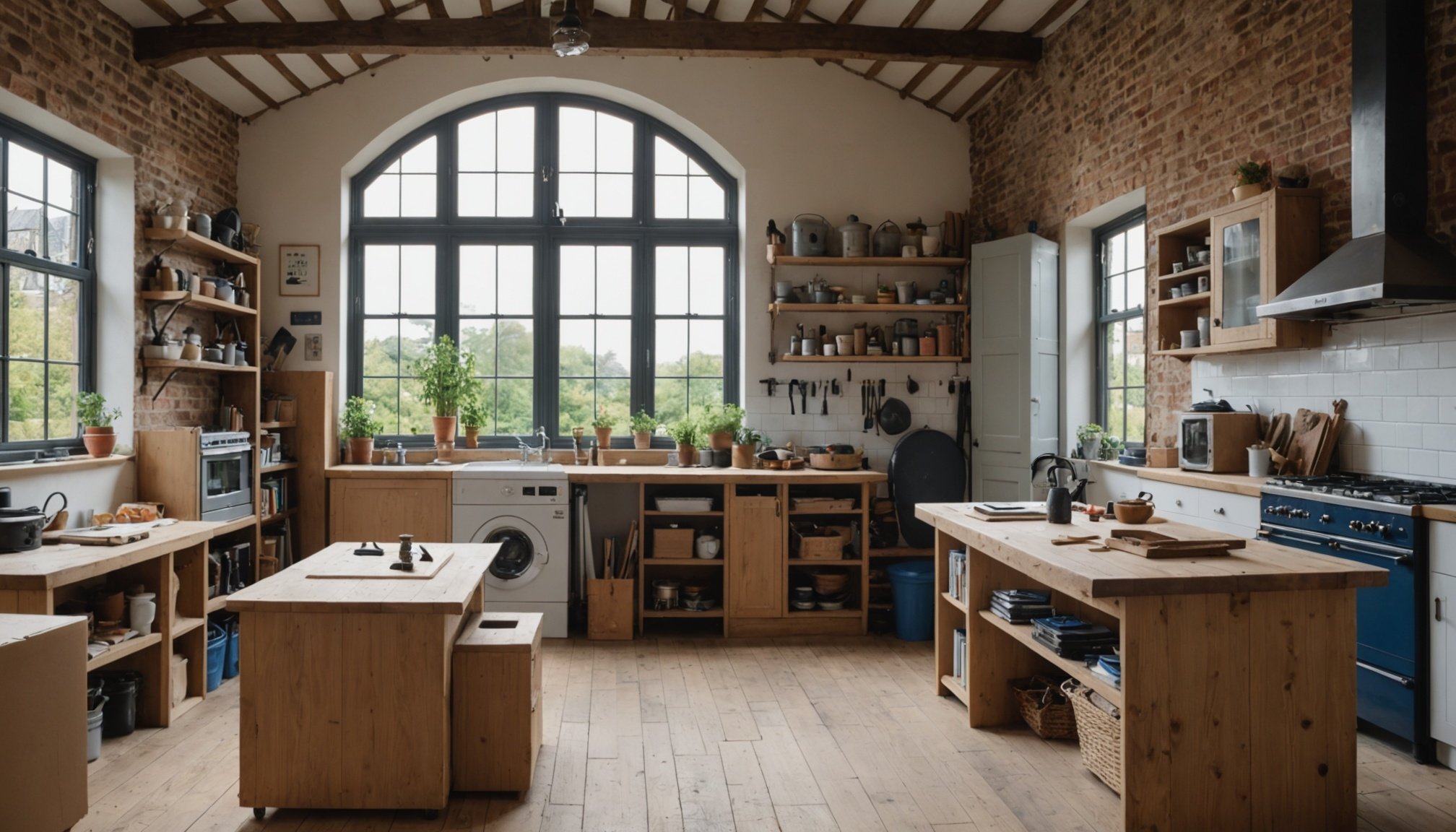Planning Your Move
A successful moving planning process starts with establishing a precise timeline. Aim to begin several months in advance, accounting for tasks such as booking movers, packing, and settling administrative details. A detailed relocation checklist can guide you through each step, from early notifications to final checks.
Creating a thorough inventory of belongings is crucial. Decide on a clear moving strategy by documenting all items, prioritizing those essential for daily life, and considering the space available in your new home. This exercise also assists in making informed decisions about what to keep, sell, or donate, leading to a smoother transition.
In the same genre : Eco-conscious moving: innovative and sustainable methods for disposing of old electronics in the uk
Budgeting is another key aspect of the moving strategy. Determine your budget early, factoring in costs such as transportation, packing supplies, and potential storage. Gathering cost estimates from multiple sources can prevent unexpected expenses and ensure you stay within budget.
For a streamlined move, remember:
Also to see : Essential Local Permits for Your Move to a New Home in Central London: What You Should Know!
- Establish a clear timeline.
- Develop a comprehensive inventory.
- Set a realistic budget.
By addressing these elements, you can ease the stress associated with moving, ensuring all aspects of your relocation are managed effectively and efficiently. This organized approach lays the groundwork for a successful start in your new home.
Organizing Your Move
Efficient moving organization can significantly reduce stress and chaos during your transition. Start by developing a comprehensive moving schedule that outlines every task and deadline leading up to the big day. Utilizing digital tools like apps and online calendars can help keep track of tasks and appointments. This structured approach ensures that nothing is overlooked and everything proceeds smoothly.
Delegating specific tasks to family members or hiring professional movers can further enhance your moving strategy. Determine who will handle packing, organising utilities, or coordinating with real estate agents. Sharing responsibilities not only lightens your load but also involves everyone in the process, making the transition more collaborative and enjoyable.
Assigning tasks and timelines creates accountability, allowing for a more streamlined process. As each task is completed, use digital tools to track progress. These tools offer reminders for tasks due, making sure you stay on track right up to moving day.
When everyone knows their role, the move becomes a team effort, minimising last-minute surprises.
Approaching your move with clear planning and task delegation ensures an effective transition, helping you arrive at your new home with ease. Use these strategies to build confidence in your moving strategy and plan a successful relocation.
Decluttering Before the Move
Before embarking on your moving journey, a few decluttering tips can make the process smoother. Start by visualising your new home and determining what truly fits into this picture. This mindset helps in the pre-move organization phase, transforming your space with ease.
You’ll want to employ simplification strategies in decision-making. Evaluate each item based on its usefulness and emotional value. Items that haven’t been used in recent years or don’t serve a practical purpose should be considered for removal. When deciding what to keep, ask yourself: “Does this item enhance my future space?”
Consider leveraging resources for donating or selling unwanted items. Charitable organisations are often more than willing to take items you no longer need, offering a great way to give back. Alternatively, online marketplaces present opportunities to sell possessions that still have value. Both approaches lighten your load and contribute to others in useful ways.
Remember, decluttering isn’t just about getting rid of things; it’s about creating a space that reflects your current lifestyle and needs. Utilising these tips can help ensure a more pleasant moving experience, supporting a seamless transition into your new home.
Packing Essentials
A successful move hinges on effective packing techniques and selecting the right packing materials. Begin by choosing materials that suit the items you are packing. For fragile items, consider bubble wrap or foam peanuts to provide cushioning. Cardboard boxes of varying sizes work well for most belongings, with heavy-duty options available for additional protection.
Maximise space by employing thoughtful packing strategies. Place heavier items at the bottom of boxes, layering lighter ones on top, and fill gaps with soft materials like towels or clothing. This technique helps distribute weight evenly and protects delicate items. When packing books, use smaller boxes to prevent them from becoming too heavy.
A crucial element you’ll want to incorporate into your moving process is creating a labeled inventory. This practice is particularly helpful when unpacking in your new home. Label each box with its contents and the room it belongs to, blank side up for easy reading. Consider numbering boxes in a sequence, keeping a master list to track items quickly.
By adopting these comprehensive packing tips and tricks, you’ll enhance organisation while safeguarding your possessions, ensuring the transition to your new home is smooth and efficient. Armed with this knowledge, embrace the move with confidence.
Transportation Logistics
Navigating the intricate details of moving logistics can feel overwhelming, but with strategic planning, you can streamline the process. Begin by selecting the appropriate transportation options that best fit your needs. Consider the size, distance, and amount of belongings to determine the ideal vehicle. Whether you’re opting for a rental van or a professional service, this decision is pivotal for a smooth move.
Next, focus on scheduling transportation services and confidently confirming essential dates. Contact your chosen service well in advance to secure availability, particularly during peak moving seasons. This proactive approach safeguards against last-minute logistical hiccups.
Effective coordination of pickup and delivery is essential in orchestrating a seamless move. Ensure clear communication with service providers regarding pick-up times and locations. Also, confirm drop-off specifics to avoid confusion. If using a private vehicle, plan routes and stops diligently to maintain efficiency.
By adopting these strategies, you not only ease transportation logistics but also lay the groundwork for a hassle-free relocation. This meticulous attention to transportation details is a cornerstone in successfully transitioning to your new home.
Managing Your Workshop Move
Undertaking a workshop relocation can feel like a daunting challenge, yet with expert equipment handling, the process can be made smoother. Start by thoroughly assessing your workshop equipment and tools, identifying which are essential for your new space. Determine whether certain items need special packing or external professional handling.
For safe transport, use customised strategies for packing and transporting workshop items. This includes securing heavy machinery with durable straps and placing smaller tools in labelled boxes. Protective materials such as bubble wrap and foam should be used liberally. Ensure everything is well-cushioned to prevent damage during transit.
Upon reaching your new location, focus on setting up your workshop for maximum functionality. Consider the layout thoughtfully, placing tools in locations that enhance productivity and operational flow. Use workshop organization methods such as pegboards for tool storage and bins for smaller parts.
Engage in strategic planning to minimise downtime, encompassing all aspects from disassembly to reassembly. These expert guidelines will ease your workshop relocation, ensuring a swift and efficient transition into your new space. Remember, careful preparation leads to a more seamless, stress-free move.
Finding Reliable Moving Services
Locating reliable moving companies can feel daunting, but armed with a strategic approach, you can secure trustworthy assistance. Begin by thoroughly researching and comparing local companies. Utilize online platforms that provide comprehensive databases of movers, offering user ratings and detailed service descriptions. This groundwork ensures you’re choosing among the best available options.
Next, engage potential movers by asking pertinent questions. Inquire about their experience, particularly with moves similar to yours in scale and distance. Confirm if they hold necessary licenses and insurance, ensuring your belongings are legally and financially protected. Understanding their protocols for handling fragile or valuable items is crucial for peace of mind.
Reading service reviews and testimonials from previous clients provides an insider’s perspective. Look beyond mere star ratings; pay attention to detailed experiences shared by other customers. These insights can reveal the mover’s reliability, customer service quality, and efficiency in resolving issues. Reviews often highlight aspects you might not initially consider, aiding in a well-rounded decision process.
By meticulously analyzing these elements, you enhance your chances of selecting reliable moving services, ultimately ensuring your relocation unfolds smoothly. Informed choices are key to a successful move, providing confidence and security as you transition to your new home.
Unpacking and Settling In
After the last box is unloaded, it’s time to focus on effective unpacking strategies. Begin by prioritising rooms essential for daily life, such as the kitchen and bedrooms, to swiftly create a functional living environment. This approach minimises disruption and establishes a sense of normalcy in your new home.
Before unpacking, organisation tips can be lifesavers. Utilize your previously created labelled inventory to locate items with ease, ensuring each box is directed to its respective room. This prevents clutter and streamlines the sorting process.
As you settle in, consider the layout and placement of furniture to maximise space and enhance comfort. Organising furniture methodically promotes a balanced flow in living areas and ensures better functionality. Avoid hasty decisions; adapt the setup to suit your lifestyle gradually.
Adapting to a new environment involves more than just arranging belongings. Embrace your surroundings by exploring local amenities and engaging with the community. These steps not only foster a welcoming atmosphere but also help you feel more connected to your new area.
Through precise unpacking strategies and thoughtful organisation tips, settling into your new home can be a smooth and fulfilling process. This encourages a positive acclimatisation experience.
Final Checklist and Resources
Once you’ve settled into your new home, a final checklist can ensure all aspects of your move have been thoroughly addressed. Begin by confirming all post-move tasks. These might include updating your address with banks and other essential services and ensuring utilities are functioning optimally.
Develop a comprehensive list of popular services you might need after moving. Consider setting up utilities if not already established. Services like internet and cable should be organised promptly to avoid disruption. Additionally, update your details with local authorities to align with regulations such as vehicle registration.
Explore a variety of moving resources that could aid in your transition. Online forums and local community boards often provide valuable insights into your new area, including recommendations for local services or social activities. These resources can introduce you to nearby amenities and help establish connections.
Incorporating a post-move strategy is crucial for a smooth and stress-free transition. By leveraging available resources and ensuring all checklist tasks are completed systematically, you’ll quickly adapt to your new environment. This readiness encourages a settled, productive start in your new residence.




